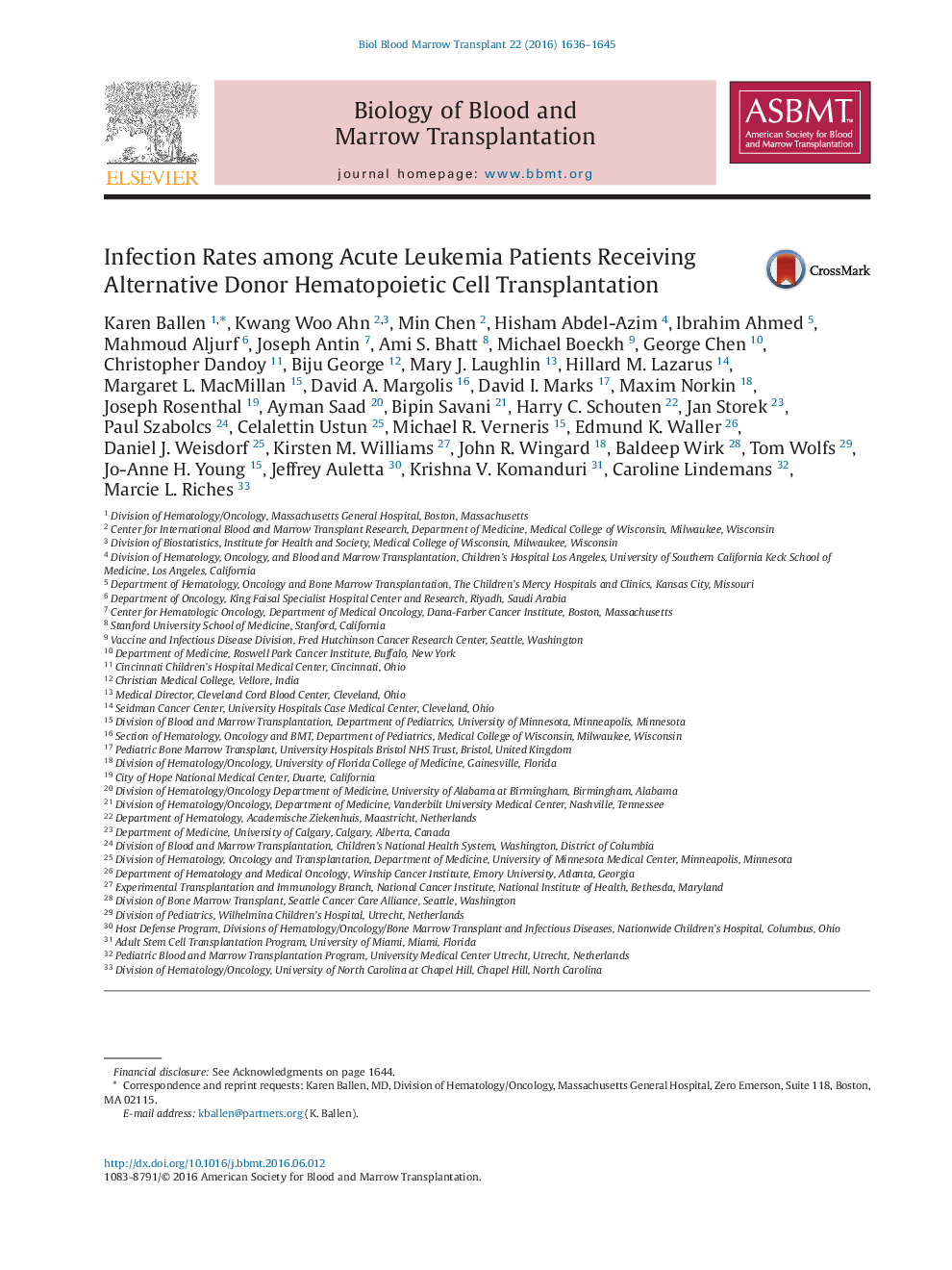| کد مقاله | کد نشریه | سال انتشار | مقاله انگلیسی | نسخه تمام متن |
|---|---|---|---|---|
| 2101283 | 1546250 | 2016 | 10 صفحه PDF | دانلود رایگان |
• Bacterial and viral, but not fungal, infections are more common after umbilical cord blood transplantations than after mismatched unrelated donor transplantations
• Bacterial and fungal, but not viral, infections were associated with poorer survival
• Overall survival is comparable among graft sources if performance status is ≥ 90%
Alternative graft sources (umbilical cord blood [UCB], matched unrelated donors [MUD], or mismatched unrelated donors [MMUD]) enable patients without a matched sibling donor to receive potentially curative hematopoietic cell transplantation (HCT). Retrospective studies demonstrate comparable outcomes among different graft sources. However, the risk and types of infections have not been compared among graft sources. Such information may influence the choice of a particular graft source. We compared the incidence of bacterial, viral, and fungal infections in 1781 adults with acute leukemia who received alternative donor HCT (UCB, n= 568; MUD, n = 930; MMUD, n = 283) between 2008 and 2011. The incidences of bacterial infection at 1 year were 72%, 59%, and 65% (P < .0001) for UCB, MUD, and MMUD, respectively. Incidences of viral infection at 1 year were 68%, 45%, and 53% (P < .0001) for UCB, MUD, and MMUD, respectively. In multivariable analysis, bacterial, fungal, and viral infections were more common after either UCB or MMUD than after MUD (P < .0001). Bacterial and viral but not fungal infections were more common after UCB than MMUD (P = .0009 and <.0001, respectively). The presence of viral infection was not associated with an increased mortality. Overall survival (OS) was comparable among UCB and MMUD patients with Karnofsky performance status (KPS) ≥ 90% but was inferior for UCB for patients with KPS < 90%. Bacterial and fungal infections were associated with poorer OS. Future strategies focusing on infection prevention and treatment are indicated to improve HCT outcomes.
Journal: - Volume 22, Issue 9, September 2016, Pages 1636–1645
